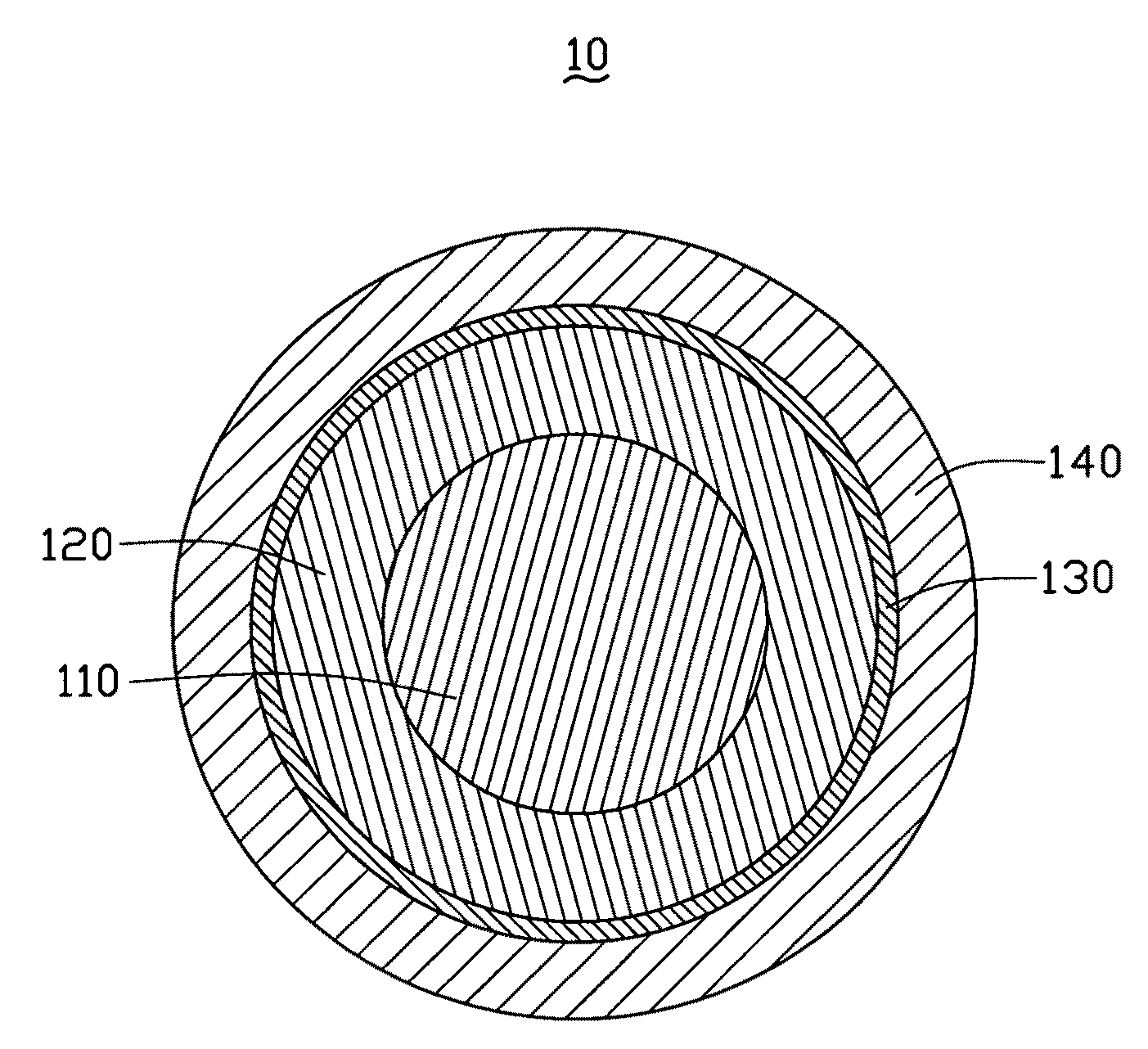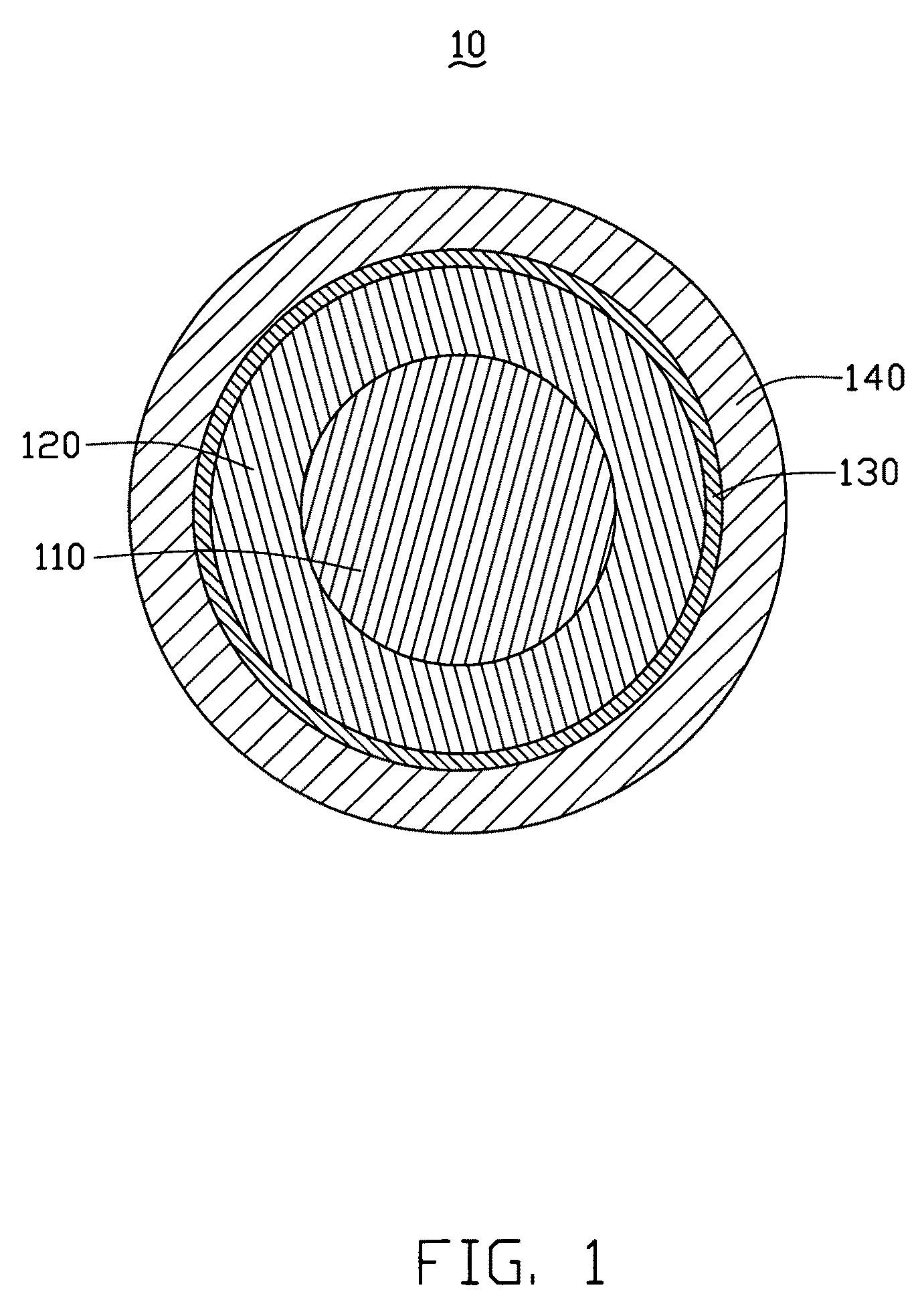Coaxial cable
- Summary
- Abstract
- Description
- Claims
- Application Information
AI Technical Summary
Benefits of technology
Problems solved by technology
Method used
Image
Examples
Embodiment Construction
[0022]References will now be made to the drawings to describe, in detail, embodiments of the present coaxial cable and method for making the same.
[0023]Referring to FIG. 1, a coaxial cable 10 according to a first embodiment includes a core 110, an insulating layer 120 wrapping the outer circumferential surface of the core 110, a shielding layer 130 surrounding the outer circumferential surface of the insulating layer 120, and a sheathing layer 140 covering the outer circumferential surface of the shielding layer 130. The core 110, the insulating layer 120, the shielding layer 130, and the sheathing layer 140 are coaxial.
[0024]The core 110 has at least one carbon nanotube wire-like structure. Specifically, the core 110 includes a single carbon nanotube wire-like structure or a plurality of carbon nanotube wire-like structures. In the present embodiment, the core 110 includes one carbon nanotube wire-like structure. A diameter of the carbon nanotube wire-like structure can range from ...
PUM
 Login to View More
Login to View More Abstract
Description
Claims
Application Information
 Login to View More
Login to View More - R&D
- Intellectual Property
- Life Sciences
- Materials
- Tech Scout
- Unparalleled Data Quality
- Higher Quality Content
- 60% Fewer Hallucinations
Browse by: Latest US Patents, China's latest patents, Technical Efficacy Thesaurus, Application Domain, Technology Topic, Popular Technical Reports.
© 2025 PatSnap. All rights reserved.Legal|Privacy policy|Modern Slavery Act Transparency Statement|Sitemap|About US| Contact US: help@patsnap.com



